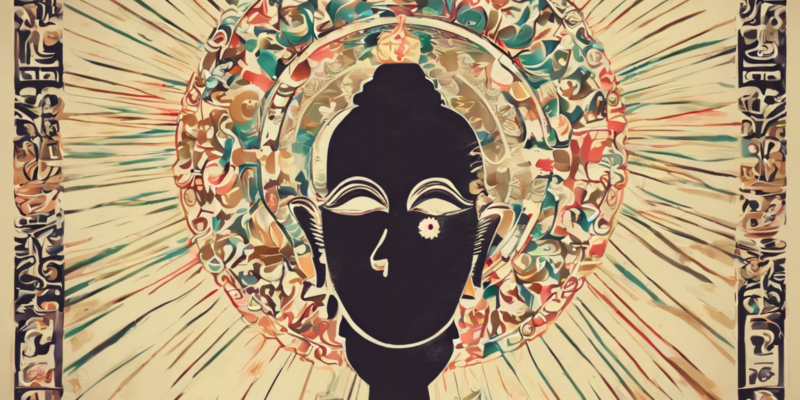Introduction
Mukhyamantri, a term used in India for the Chief Minister of a state, holds a pivotal position in the governance structure of the country. Their role is crucial in shaping policies, implementing programs, and ensuring the overall development of the state. In this article, we will explore the qualities and attributes that make a Chief Minister exemplary and discuss some of the best Chief Ministers India has seen.
Qualities of a Great Chief Minister
-
Visionary Leadership: A great Chief Minister is one who has a clear vision for the development of the state and works towards achieving it.
-
Decisiveness: Making tough decisions is an essential part of governance, and a good Chief Minister exhibits decisiveness in their actions.
-
Integrity: Upholding ethical standards and integrity is non-negotiable for a successful Chief Minister.
-
People-Oriented Approach: A Chief Minister who places the interests and welfare of the people above all else is often the most revered and loved by the public.
-
Accountability: Being accountable to the people and taking responsibility for both successes and failures is a trait of a good Chief Minister.
Desh ka Sabse Achcha Mukhyamantri
-
Narendra Modi: Before becoming the Prime Minister of India, Narendra Modi served as the Chief Minister of Gujarat for over a decade. His focus on development, infrastructure, and governance made him one of the most celebrated Chief Ministers in the country.
-
Arvind Kejriwal: The Chief Minister of Delhi, Arvind Kejriwal, is known for his innovative policies in areas such as healthcare and education. His approachable demeanor and people-centric governance have earned him praise from many quarters.
-
Naveen Patnaik: Naveen Patnaik, the Chief Minister of Odisha, is hailed for his focus on disaster management, poverty alleviation, and women empowerment. His long tenure and consistent performance have made him a respected figure in Indian politics.
Frequently Asked Questions (FAQs)
1. What is the role of a Chief Minister in India?
In India, the Chief Minister is the head of the state government and is responsible for overseeing the administration, implementing policies, and ensuring the overall welfare and development of the state.
2. How is a Chief Minister different from a Prime Minister?
While the Chief Minister heads the state government, the Prime Minister is the head of the central government in India. The Prime Minister is elected by the members of the Lok Sabha, whereas the Chief Minister is chosen by the members of the state legislature.
3. Can a Chief Minister serve more than two terms?
There is no specific restriction on the number of terms a Chief Minister can serve in India. As long as they have the support of the majority in the state legislature, they can continue to hold office.
4. How are Chief Ministers appointed in India?
The Chief Minister is usually the leader of the majority party in the state legislature. After a state election, the Governor of the state appoints the Chief Minister based on this criterion.
5. Can a Chief Minister be removed from office before the end of their term?
Yes, a Chief Minister can be removed from office if they lose the majority support in the state legislature through a vote of no confidence. The Governor may also dismiss the Chief Minister if they fail to prove majority support after a general election.
6. What powers does a Chief Minister have?
A Chief Minister wields executive powers in the state, including the authority to make decisions on matters such as law and order, finance, and administration. They also play a crucial role in policy-making and represent the state in various forums.
7. How does a Chief Minister contribute to the development of the state?
A Chief Minister plays a key role in formulating policies, implementing development programs, attracting investments, and fostering economic growth in the state. Their leadership and vision are instrumental in shaping the overall development trajectory of the state.
8. What are some major challenges faced by Chief Ministers in India?
Chief Ministers in India grapple with challenges such as poverty, unemployment, infrastructure deficits, regional disparities, political instability, and bureaucratic hurdles. Addressing these challenges requires effective governance, strategic planning, and strong leadership.
9. How do Chief Ministers interact with the central government?
Chief Ministers collaborate with the central government on matters such as fiscal transfers, policy coordination, and national programs. They often engage in discussions with the Prime Minister and central ministers to address state-specific issues and seek support for developmental initiatives.
10. What is the significance of regional parties in the selection of Chief Ministers?
Regional parties play a crucial role in the selection of Chief Ministers in states where they have a strong presence. These parties often champion regional interests, cultural identity, and local development priorities, influencing the choice of Chief Minister and shaping state politics.
Conclusion
In conclusion, the role of a Chief Minister in India is paramount in driving the development and progress of states. The qualities of a great Chief Minister include visionary leadership, integrity, accountability, and a people-oriented approach. While there have been several exemplary Chief Ministers in India’s history, those who prioritize governance, innovation, and inclusive growth leave a lasting impact on the state and its people.



Comments